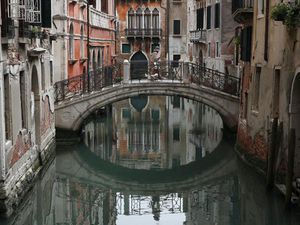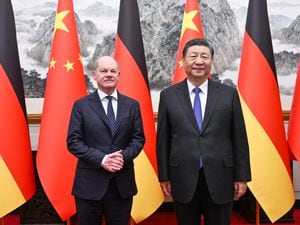Venice views lockdown as chance to reimagine future
The city’s massive tourism industry has been at risk of damaging the sights visitors come to see.

Officials in Venice have voiced hope the coronavirus crisis will provide an opportunity to reimagine one of the world’s most fragile cities, creating a more sustainable tourism industry and attracting more full-time residents.
For years, the Italian city has faced an almost existential crisis, as the unbridled success of its tourism industry threatened to ruin the things that have drawn visitors for centuries.
Now the coronavirus pandemic has dammed off the tide of tourists and rocked the city’s economy, leaving the famed lacquered black gondolas moored, museums sealed shut and St Mark’s Square – normally teeming in any season – traversed at any given moment by just a handful of souls.
The pandemic – following on the heels of a series of exceptional floods in November that dealt a first economic blow – ground the city to a halt and promised government assistance has been slow to arrive.
The city that has inspired painters like Canaletto and Turner is now a blank canvas.
Mayor Luigi Brugnaro, speaking in the empty piazza in front of St Mark’s Basilica, said: “This allows us to rethink life in the historic centre.”
The population of the historic city centre has shrunk to some 53,000, down by one-third from a generation ago.
To help repopulation, Mr Brugnaro favours a proposal from the city’s Ca’ Foscari university to rent to students apartments that had been removed from housing stock as tourist rentals.
The mayor imagines a dynamic he witnessed in Boston, where those who come to study fall in love with the city and stay.
Mr Brugnaro also wants to create a centre to study climate change, given the city’s vulnerability to flooding, that could attract scientists who would become residents.
He imagines triggering a sort of Renaissance that would bring other foreign residents – creatives – who for centuries were the city’s lifeblood.
And he would like to resize the so-called hit-and-run mass tourism on which the economy depends.
“Venice is a slow city,” he said. “The slowness of Venice is the beauty of Venice.”

Visions for Venice’s future include calls to offer tax breaks to bring traditional manufacturing back to the historic centre. Civic groups have suggested incentives to restore traditional ways of Venetian life, like the standing rowboats used for centuries by residents but that struggle to compete with motorised boats.
There is hope tourist trap shops that disappeared after the shutdown will be replaced with more sustainable businesses.
Bevilacqua – the maker of luxury textiles used by fashion houses such as Dior, Valentino and Dolce & Gabbana – is the only manufacturer in operation on the Grand Canal.
Rodolfo Bevilacqua said: “To relaunch, Venice must return to its past. You cannot, and I will use a heavy term, profane it daily. That is, people who don’t clean up after themselves.”
While the pandemic has offered a glimpse at a cleaner, slower Venice, already there are signs of how hard it will be to maintain that, let alone implement grander plans.

Jane da Mosto, executive director of the We Are Here Venice group, notes bars that have begun to reopen are serving with disposable plates and cutlery – not more sustainable alternatives.
Debates over how to manage tourism have always been heated in Venice and are especially fraught now. Venice’s controversial plan to impose a tax on day-trippers has been put aside – and many object that any such system would give the city even more of a theme park air.
The mayor and tourism officials estimate it will be at least a year until tourists – who have numbered 30 million a year – return in any significant numbers. While many are revelling in the drop in noise pollution and improved air quality, a year without tourists also means many jobs will be wiped out.
“It will be a fight for survival,” said Claudio Scarpa, the head of the Venetian hotel association.
The docking of cruise ships is halted for this year. Gondoliers are not permitted to glide through the canals until June 1, and many are struggling, having received just one payment of 600 euro (£522) from the government.
Their future even after that date remains uncertain.

The gondolier’s position at the rear of the boat allows enough distance to spare them the mask requirement. But Andrea Balbi, the head of the association representing the city’s 433 gondoliers, said the rules so far will not permit them to help tourists on and off the rocky boats.
The extended hand is not just a courtesy, Mr Balbi said, but a condition of insurance coverage.
Arrigo Cipriani, the owner of Harry’s Bar, said he is not even thinking about opening the canal-side bar made famous by Ernest Hemingway until health restrictions are relaxed.
His bar offers some of the best people-watching in Venice – but it is just 30ft by 13ft, which under current rules would allow only a fraction of the usual clientele.
Mayor Mr Brugnaro is hoping to send a signal of recovery by staging the popular Redeemer’s festival in July. The annual event celebrates the end of the plague in 1577 – one of the most disastrous episodes in Venetian history – with a regatta and a spectacular fireworks display.
“It will be something out of this world to see,” he said, “watching from a boat in St Mark’s Basin.”





